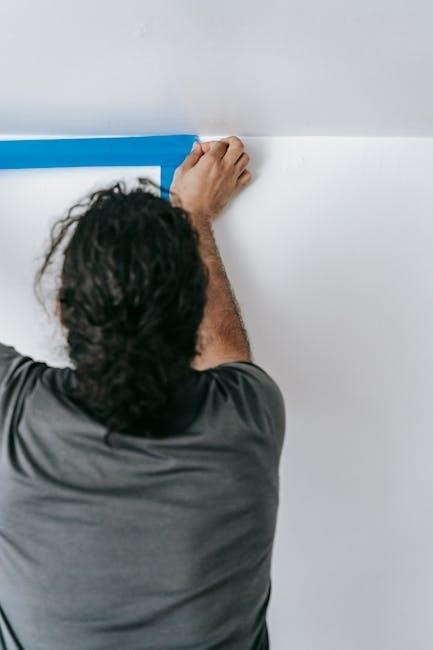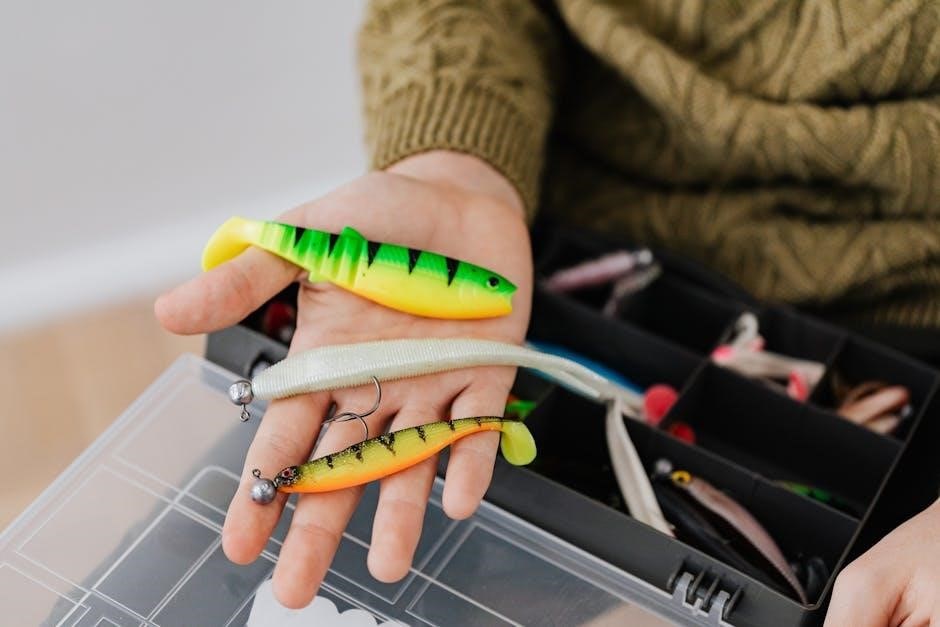Tipping a fishing guide is a common practice, showing appreciation for their service and expertise, typically ranging from fifteen to twenty percent of the total trip cost always expected.
Understanding the Importance of Tipping
Tipping a fishing guide is a way to express gratitude for their hard work and dedication to providing a great experience. The guide’s expertise and knowledge of the water are crucial to a successful trip, and a tip shows appreciation for their efforts. A good fishing guide can make a significant difference in the quality of the trip, and a tip is a way to acknowledge their contribution. By tipping a fishing guide, clients demonstrate their understanding of the importance of the guide’s role in ensuring a memorable and enjoyable experience. This practice is widely accepted and expected in the fishing industry, and it helps to build a positive relationship between the guide and the client, making the overall experience more enjoyable for everyone involved in the trip always.

Factors Affecting Tip Amount
Length of trip and level of service provided are factors affecting the tip amount given to a fishing guide always considered by clients during the trip.
Considering the Level of Service Provided
The level of service provided by a fishing guide plays a significant role in determining the tip amount, as a good guide can make a huge difference in the overall experience. A guide who is knowledgeable, friendly, and helpful is likely to receive a higher tip than one who is not. The guide’s ability to find fish, provide instruction, and ensure a safe and enjoyable trip are all important factors to consider when deciding on a tip. Additionally, the guide’s attitude and willingness to go the extra mile can also impact the tip amount, as clients appreciate guides who are enthusiastic and dedicated to their work. By considering the level of service provided, clients can show their appreciation for a job well done and ensure that their guide is fairly compensated for their efforts. This is an important aspect of the tipping process.

Determining the Right Tip Amount
Calculating the right tip amount is crucial, considering factors like trip cost and service quality to ensure a fair gratuity is given to the fishing guide always.
Calculating the Tip Based on Trip Cost
To calculate the tip based on trip cost, consider the total expense of the fishing trip, including gear, fuel, and guide fees. A common method is to calculate a percentage of the total cost, typically ranging from 15 to 20 percent. This approach ensures that the tip is proportional to the overall cost of the trip. For example, if the total trip cost is $1000, a 15 percent tip would be $150, while a 20 percent tip would be $200. By using this method, you can ensure that your tip is fair and reflects the quality of service provided by the guide. The trip cost can be used as a benchmark to determine a fair and reasonable tip amount, making it easier to decide on a suitable gratuity. The guide’s expertise and service quality are also essential factors to consider when calculating the tip.
Location and Type of Fishing
Location and type of fishing influence the guide’s expertise and service required always.
Impact of Fishing Location on Tip Amount
The location of the fishing trip can significantly impact the tip amount, as certain locations may require more expertise and effort from the guide. For example, fishing in remote or hard-to-reach areas may require more planning and physical exertion from the guide, which can justify a higher tip. On the other hand, fishing in more accessible locations may require less effort, which can result in a lower tip. The type of fishing, such as freshwater or saltwater, can also impact the tip amount. Guides who specialize in certain types of fishing may require more skill and knowledge, which can also justify a higher tip. Overall, the location and type of fishing can play a significant role in determining the appropriate tip amount for a fishing guide, and should be taken into consideration when deciding how much to tip. Factors such as distance and difficulty are considered.
Guiding as Difficult Work
Guiding is physically demanding and requires great skill and patience always from the guide every day.
Appreciating the Effort of the Guide
Guides put in a lot of effort to ensure a successful trip, often going above and beyond to help clients catch fish. Their expertise and knowledge of the water are invaluable, and they work hard to provide a positive experience. A good guide will be able to read the water, predict fish behavior, and make adjustments on the fly to increase the chances of catching fish. They will also be able to provide instruction and guidance to clients, helping them to improve their fishing skills. By appreciating the effort of the guide, clients can show their gratitude for the hard work and dedication that goes into making a fishing trip successful. This can be done through a generous tip, which is a common way to show appreciation for good service. Guides rely on tips to supplement their income.

Exceptional Service and Spot Bonuses
Spot bonuses are given for exceptional service, such as helping a child catch a big fish, always generously rewarded with extra money.
Recognizing Outstanding Performance
Recognizing outstanding performance is crucial when it comes to tipping a fishing guide, as it shows appreciation for their hard work and dedication to ensuring a successful trip. A good fishing guide will go above and beyond to provide an exceptional experience, and recognizing this with a generous tip is essential. The level of service provided, the guide’s expertise, and the overall experience are all factors to consider when determining the tip amount. By recognizing outstanding performance, clients can show their gratitude and encourage guides to continue providing exceptional service. This, in turn, can lead to a more enjoyable and memorable fishing trip for all parties involved, making the experience even more special and rewarding for everyone. The guide’s performance is a key factor in determining the tip amount, and recognizing outstanding performance is vital;

Tipping for Fly Fishing Guides
Tipping fly fishing guides requires considering factors like trip length and guide expertise always to determine a fair tip amount typically fifteen percent.
Specific Considerations for Fly Fishing Trips
When it comes to fly fishing trips, there are specific considerations to keep in mind when determining the tip amount. The guide’s expertise and knowledge of the water are crucial factors to consider. A good fly fishing guide will have extensive knowledge of the local fish species, habitats, and behaviors, which can greatly impact the success of the trip. Additionally, the guide’s ability to instruct and assist with casting and fishing techniques is also an important consideration. The quality of the equipment and gear provided by the guide is also a factor to consider. Overall, a fair tip for a fly fishing guide will take into account the guide’s expertise, instruction, and equipment, as well as the overall quality of the trip experience, and is typically based on the total cost of the trip.
